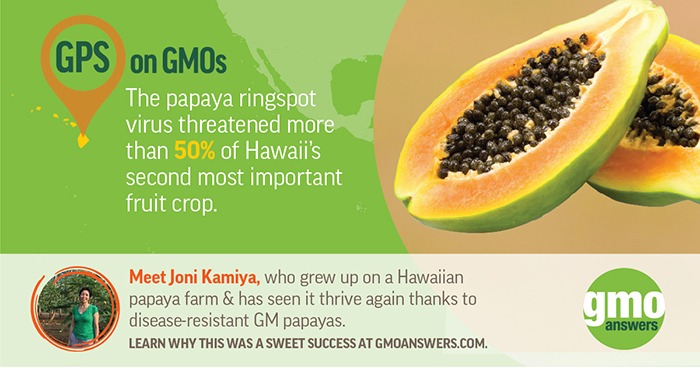Image by Varintorn Kantawong from Pixabay
by Carie Moore
Cool, juicy, sweet fruit on a summer day is unbeatable! But we often take it for granted.
At one point in time, not that long ago, papayas were almost wiped out. A virus known as ringspot decreased production by 50% over a period of 13 years.
With a GMO alternative known as the Rainbow Papaya, farmers can now produce 125,000 pounds per acre each year. The original papaya averages 5,000 pounds. Scientists pretty much just inserted the gene from the virus into the papaya’s genetic code, kind of like us getting a vaccination for the flu.
Still today, there is no organic or conventional way to produce papaya to match this work. More than 90% of the papaya production is with the improved GMO seed. The virus is still present, but it doesn't have the impact it used to. Humans aren't able to contract the virus because it is a plant-based disease. Thus, the insertion of the virus into the molecular structure is not a threat to humans when they eat the fruit! How cool is that?

Hawaiian farms are now considered ‘sustainable agriculture’ and are boasting generational success! Some are three generations and counting. Not only did genetic modification save a crop eaten all around the world, but it saved families. I may be biased, but I’m all about families, all about farms, and all about farms making money to support families for the future.
Did you know that green zucchini and yellow summer squash are the same? Cucurbita pepo. How fun is that to say!?
There are two or three viruses that attack this vegetable and roughly only 10% of the market is GM which is not a lot. They look and grow about the same, other than how they handle the virus when infected. Again, one will wither and die and the GM version will continue to grow. The seeds do have a legal tie to them and it’s very specific about where and how they can be sold. As of last research, they were unable to be sold in Canada.
The way I see it, there are so many other varieties of squash/zucchini that it’s not as financially risky to grow them and the demand isn’t as great. Unlike papayas that are grown in specific climates and regions, most of us can grow a squash or zucchini without even trying. I think they plant themselves! I have found them growing in our manure piles, pastures, anywhere you may have disposed of rotten or unusable pieces, they tend to regrow with no help. Livestock and chickens will eat the leftovers and when the seeds come out the other end, you'll have another plant growing.
GMOs are grown around the world. (Check out the link below for an informative graphic.) And stay tuned for Part 3 next week as we dig deeper into these amazing crops!
https://gmoanswers.com/sites/default/files/Info_GM_World_Map_071017_v5%20%282%29.pdf
